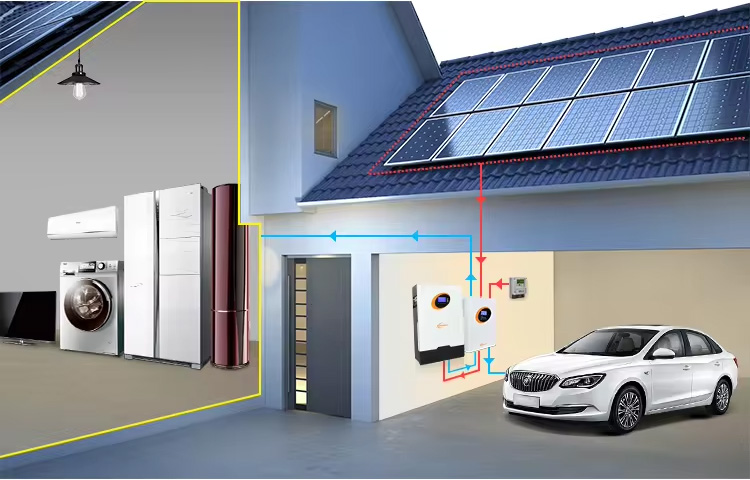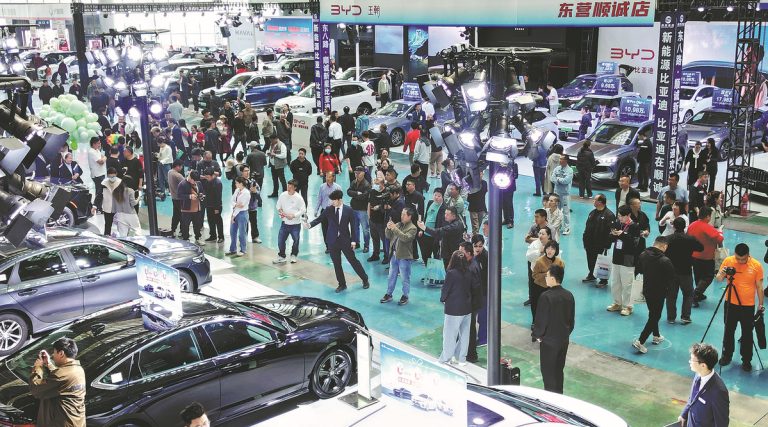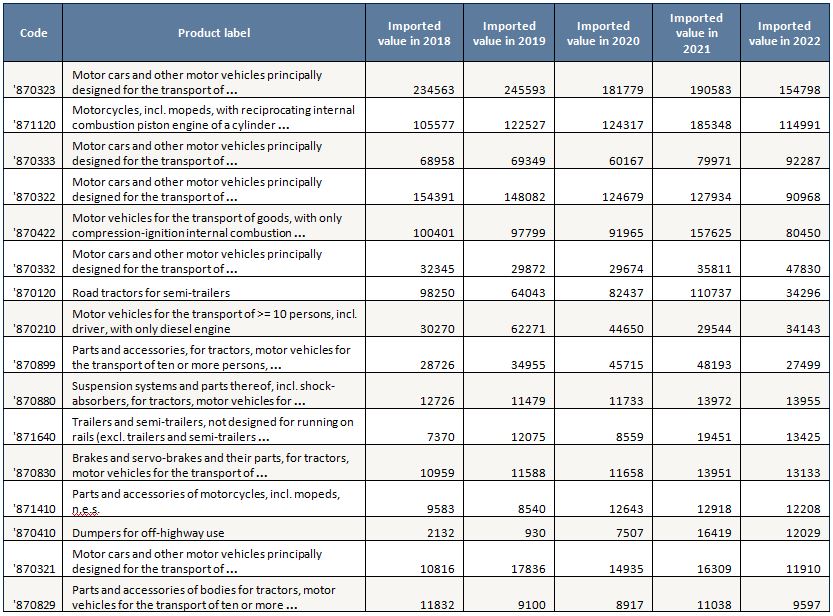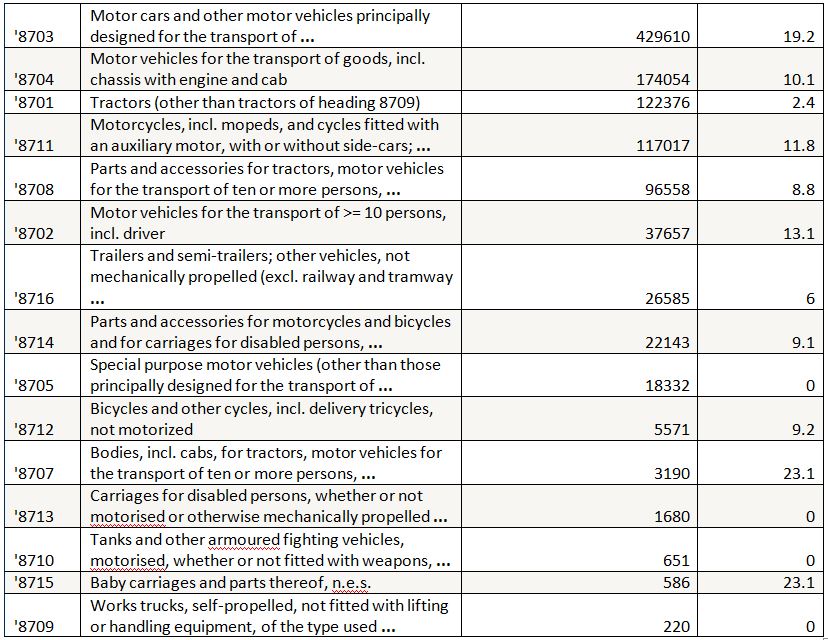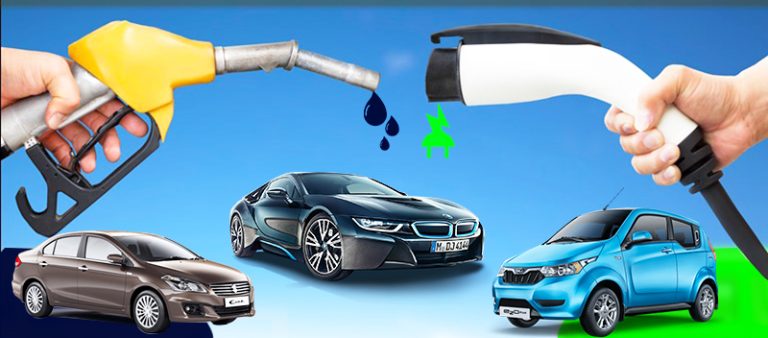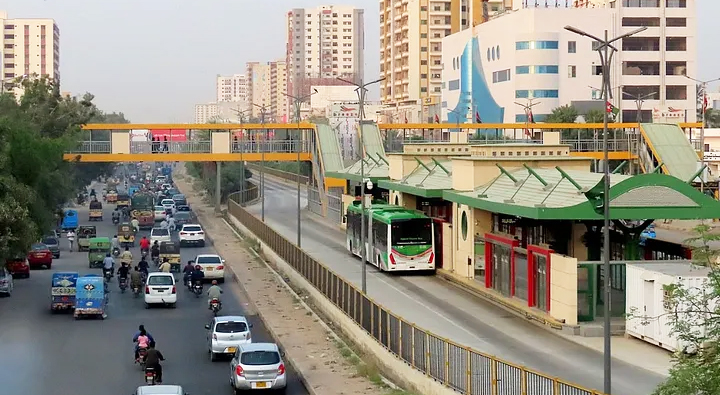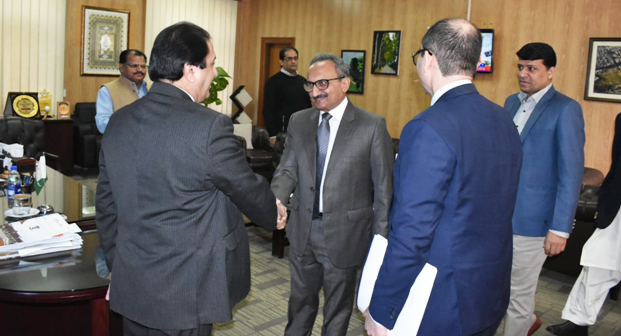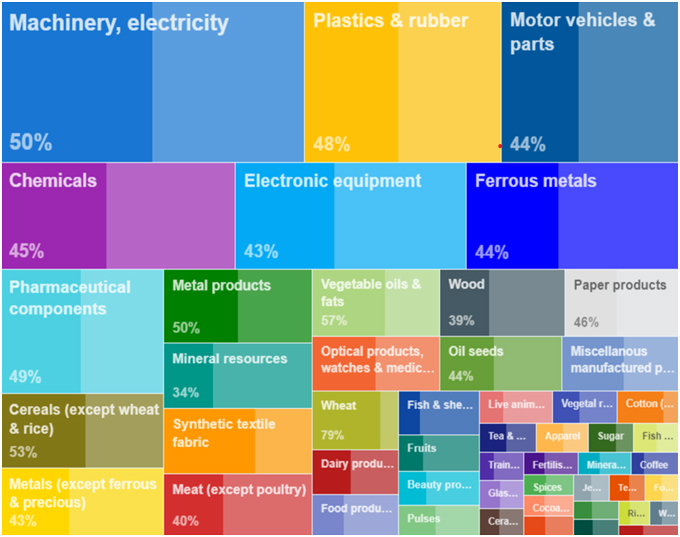About the Interviewee: “Dr. Alamgir Khan Unveils the Future of Agro-Engineering – Dive into the mind of a patriot and innovator,
Dr. Alamgir Khan, who is revolutionizing agriculture with engineering. His pioneering work in launching a bachelor’s degree in Agro-Industrial Engineering Technology is setting the stage for a sustainable future. This interview is not just a read; it’s a call to action for policymakers, academicians, and practitioners alike. Discover how Dr. Alamgir’s dedication is transforming the backbone of our country. A must-read for visionaries and changemakers.
Engr. Mansoor Rizvi, the interviewer and advisor at Automark International, expresses his gratitude to Engr. Dr. Alamgir on behalf of Automark for taking the time to participate in this esteemed interview.
Question 1: Dear Dr. Khan, could you please provide a brief overview of your contributions to the advancement of agricultural engineering in both Pakistan and Canada?
First and foremost, I would like to express my sincere gratitude for the opportunity to discuss my professional journey on this esteemed platform. Commencing my career in 1988 at the Agricultural Mechanization Research Institute (AMRI), I undertook various assignments that led to significant milestones:
- Established a cutting-edge laboratory in Pakistan dedicated to the rigorous testing of sprayers and spray nozzles, positioning it as a central national resource for advancing pesticide application techniques in the country.
- Played a pivotal role as the coordinator of the National Task Force, constituted by the Federal Ministry of Industries and Special Initiatives, contributing significantly to the enhancement of cotton ginning machinery in Pakistan. Implemented innovative features resulting in a 60% increase in machine output, garnering a prestigious recognition through an award.
- Successfully engineered and introduced multiple farm machines and mechanization techniques, with the majority being successfully commercialized.
- Contributed to a team effort aimed at improving saline sodic soil with a hardpan in Sheikhupura area of Punjab, Pakistan. Assisted in the development and application of a ripper (bulldozer attached) to effectively break the soil hardpan. Implemented strategies involving the incorporation of gypsum and green manuring, resulting in improved soil health and subsequently enhancing crop yield.
Additionally, I served as a National Resource Expert at the Small and Medium Enterprise Development Authority (SMEDA), conducting training sessions in Punjab and Sindh focused on:
a) Selection of sprayers and pesticide application techniques.
Impact of spray application pressure for reaching target
Microscopic dimensionsphotographic system for spray droplet spectrum
b)Optimal utilization of farm machinery for efficient mechanized farming practices.
Mobile wheat Straw baler
Seed cleaner and grader
c) Introduction to modern cotton ginning machines and comprehensive guidance on their operational procedures.
Improved and standardized cotton Ginstand
Standardized critical components of cotton Ginstand
Newly developed inspection gauges
Question 2: What inspired your journey to Canada, and what valuable insights or experiences did you gain during your time there?
I embarked on my journey to Canada with the goal of pursuing my Ph.D. Engineering degree, aiming to cultivate innovative skills within the dynamic academic landscape. Simultaneously, I explored options for the treatment and care of my special needs son, Muhammad Ossayd Khan.
Throughout my tenure at both the University of Guelph (UoG) and Memorial University, where I served as a graduate research assistant, graduate teaching assistant, and post-doctorate research fellow, I made substantial contributions to various impactful assignments:
a)Pioneering innovative techniques for the bioremediation of petroleum-contaminated soil.
Microbial enumeration system and allied laboratory set up at University of Guelph, Canada
Illustrative representation of the bio-remediation testing system for soil contaminated with petroleum hydrocarbons
b) Analyzing historical data to assess the impact of climate change on frost-free days in Ontario.
c) Implementing vegetative filter strips for effective watershed management.
d) Spearheading the development of hydrochar to enhance soil health and facilitate vegetable cultivation in controlled environments. There was a special emphasis on optimizing the light spectrum for the high-quality production of vegetables in greenhouse.
Question 3: What stands out as your primary contribution as an academic expert?
In Pakistan, despite its agricultural prominence, there is a significant shortage of qualified industrial experts/technicians to support agro-based industries. The majority of these industries in the country operate as small or medium enterprises, with some adhering to seasonal operational cycles. Unfortunately, many of these mills are overseen by illiterate machinists who lack exposure to globally advanced systems. This dearth of qualified industrial technicians results in compromises in automation, product quality, and poses challenges in export efforts.
As previously discussed, my initial contribution centered on improving cotton ginning machinery. The resounding success of this national-level initiative boosted my confidence, prompting me to focus more extensively on the agro-based industry.
Through formal collaboration with stakeholders, I dedicated my efforts to crafting an innovative curriculum, resulting in the successful launch of a demand-driven flagship degree program, “B.Sc. Agro-Industrial Engineering Technology,” which received widespread acclaim nationwide. Additionally, I played a crucial role in facilitating the formal enhancement and authentication of the newly developed curriculum through the National Curriculum Review Committee (NCRC) of the Pakistan Higher Education Commission (HEC).
My commitment extends to contributing expertise to the Pakistan Engineering Council and the National Technology Council of Pakistan. In these capacities, I serve as a team member or team leader for the evaluation of multiple engineering and technology degree programs across the country.
Additionally, I played a key role in the establishment of MNS University of Agriculture, Multan (MNSUAM), serving as a team member. This involved formulating a master plan for developing 500 acres of barren land in Jalalpur Pirwala. Actively participating in the execution, I contributed to the creation of a new department and the successful implementation of a flagship degree program.
Question 4: Given your national and international expertise in improving soil health, particularly in light of its significance for agricultural practitioners in Pakistan, could you offer insights or recommendations on modern techniques to address and enhance soil health in Pakistan?
I acknowledge that the matter of soil health has grown increasingly urgent, presenting silent challenges for the farming community in Pakistan. Additionally, while water management endeavors to enhance conveyance efficiency, there is a notable lack of focus on improving water application efficiency. To tackle this critical concern, it is imperative to embrace modern techniques that can effectively enhance soil health. Here are some recommendations:
- In the northern area where all season crop cannot be practiced, cover cropping should be introduced to protect and nourish the soil during off-seasons. Cover crops not only prevent soil erosion but also contribute organic matter, enhancing soil structure and fertility.
- For crop protection, avoidexcessive use of synthetic chemicals and promote biological controls options. Organic practices enhance soil microbial activity, improve water retention, and contribute to the overall sustainability of agricultural systems.
- Deficiency of organic matter in the Pakistani soil is a pressing concern. Increase the organic matter content of the soil by incorporating organic materials such as compost, crop residues, and animal manure. This enhances soil structure, water retention, and microbial activity.
I am delighted to share my expertise in the preparation and application of aerobic compost to enrich soil fertility. Managing agricultural waste at the farm level is a formidable challenge mainly due to limited mechanization options, often resulting in harmful practices such as burning of farm wastes, which contributes to smog. In collaboration with Dr. Sarfraz Hashim at MNSUAM, we have successfully addressed this issue by developing a windrow turner. This innovative technology assists farmers in transforming farm waste into a valuable resource through large-scale aerobic composting, ensuring efficient aeration for the rapid degradation of agricultural waste.
To optimize the benefits of compost in soil, enhance the sustained activity of beneficial microbes, and prevent compost loss, I recommend exploring subsurface compost application in the central and southern regions of Pakistan. These areas, characterized by harsh summers and intense sunlight, often experience challenges in retaining compost on the soil surface. The technology introduced by MNSUAM provides a swift and scalable solution to compost preparation, potentially improving soil health and creating new business opportunities in Pakistan.
Considering the projected growth of the global compost market, estimated to reach approximately USD 5.7 billion by 2025, there is substantial potential for graduates in Agricultural Engineering to capitalize on emerging business prospects. By embracing this innovative approach, we can contribute to sustainable agricultural practices, promote soil health, improve soil water holding capacity, enhance water application efficiency and tap into the expanding market for compost products.
MNSUAM aerobic compost windrow turning system
Question 5: With your expertise from the Agricultural Mechanization Research Institute and international exposure, we seek your insights on improving local farm machines. Could you guide us on aligning them with global standards for successful export?
I take this opportunity to provide insights into the challenges associated with the quality of locally developed farm machines in Pakistan. Despite the commendable skills possessed by research organizations, academic institutions, and farm machine manufacturers in producing quality machinery, there is a noticeable weak connection due to their dispersed localities. I firmly believe that manufacturers earnestly desire to enhance the quality of their products, with a shared concern about the limited availability of standards, treatment/testing facilities, and necessary materials in close proximity to their industry.
The Agricultural Mechanization Research Institute (AMRI) has made significant strides in formulating specifications for farm machines, potentially serving as a pivotal step towards standardizing farm machinery in Pakistan. Concurrently, the Pakistan Standards and Quality Control Authority (PSQCA) is actively engaging with experts to develop standards that can guide manufacturers in producing reliable machines. Unfortunately, these efforts are not yielding the desired results, primarily due to absence of policy guidelines and poor linkage between stake holders. Pooling expertise can facilitate manufacturers in adhering to quality benchmarks, assisting farmers in selecting high-quality machines, and subsequently boosting the export of farm machinery.
To expedite the production of quality farm machines, it is crucial to consolidate available resources and streamline collaboration among all stakeholders by establishing “Farm Machine Production Parks (FMPPs)” in selected prime agricultural regions of the country. These regions should be chosen based on the concentration of agriculture for farmer feedback, research/academic organizations for regular guidance, and manufacturer and vendor support facilities. I strongly advocate for the creation of at least five such parks in strategic locations of Pakistan, namely Peshawar, Sialkot (Daska Tehsil), Multan, Quetta, and Tandojam, all of which exhibit substantial potential for establishing pioneering parks.
These FMPPs should serve as an autonomous body under the umbrella of provincial government. Special tax rebate may make the system a success. Though each FMPP should be headed by highly qualified and experienced agricultural engineer for a tenure of only three years and selection must be made by FMPP board of directors with approval of provincial government. These FMPPs would function as dedicated industrial estates for farm machinery, featuring essential sub-stations of government institutions and facilities, including:
i. Sub-stations of the Agricultural Engineering Institute (AEI), or AMRI in each FMPP.
ii. Sub-office of PSQCA for on-site regular inspection to ensure quality of farm machine with the assistance of AMRI, providing a stamp of approval to guarantee high quality for local farmers and instill international trust.
iii. Provincial ministry of industries to establish material banks with state-of-the-art facilities for on-site testing of materials and heat treatment options, ensuring the availability of required materials at each FMPP.
iv. Display centers to showcase both local and imported farm machines, providing farmers with an opportunity to visually assess and select machines that align with their specific needs.
v. Academic Institutions to open training centers with the collaboration of provincial agriculture departments and Technology Upgradation and Skill Development Company (TUSDEC) with the aim to offer regular training of intern students, farmers, farm machinery manufacturers, technical staff of agro-based industries and Agricultural Engineering field staff.
vi. Facilitation centers of Trade Development Authority (TDA) for regular updates on international needs and assistance to manufacturers for the adequate export of farm machines.
Question 6: What are your prospective insights regarding the innovative future trends in agricultural engineering?
I believe that agricultural engineering is a dynamic field, characterized by continuous evolution driven by rapid technological advancements. Professionals in this domain must remain up on the latest knowledge and developments. Key areas of emphasis encompass automated farm mechanization, the integration of robots in agriculture, innovative approaches to enhancing water application efficiency, advancements in smart structures for vertical farming (hydroponics, aquaponics, aeroponics) within controlled-environment, and value addition to crops through progressive measures in agro-based industries. Similarly, efforts to reduce greenhouse gas emissions, combat climate change, and promote carbon-neutral development and clean energy in agriculture align with the United Nations Sustainable Development Goals.
The integration of nano-technology is emerging as a promising option. The synergy between agricultural engineering and nano-technology fosters the development of novel agrochemicals, including nano-fertilizers and nano-pesticides. Agricultural engineering plays a fundamental role in development and usage of nano-technology, development of innovative equipment for applying nano agrochemicals and nano-sensors for disease identification.
Agricultural engineering involves not only traditional mechanical engineering but also branches like mechatronics, control engineering, information of things (IoT), and advanced knowledge of microbiology should be incorporated in the curriculum of Agricultural Engineering degree programs in Pakistan.
In Pakistan, numerous agro-based industries are overseen by skilled yet illiterate mechanics, facing challenges in adopting innovative advancements. Their limited proficiency in modern technology leads to increased operational costs, compromises on automation, and adversely affects product quality, impeding international competitiveness. To tackle this challenge, there is an urgent need to enhance agricultural engineering programs by introducing a new stream, such as B.Sc. Agro-industrial engineering technology, with a focus to produce skilled process engineering entrepreneurs to offer regular consultancy to the agro-based industry.
Implementing these recommendations could create a synergistic effect, leading to increased job opportunities and a boost in export potential. This approach aims to produce high-quality, value-added agricultural products, contributing to the growth and competitiveness of the agriculture sector.
About the Interviewee:
“Dr. Alamgir Khan Unveils the Future of Agro-Engineering – Dive into the mind of a patriot and innovator, Dr. Alamgir Khan, who is revolutionizing agriculture with engineering. His pioneering work in launching a bachelor’s degree in Agro-Industrial Engineering Technology is setting the stage for a sustainable future. This interview is not just a read; it’s a call to action for policymakers, academicians, and practitioners alike. Discover how Dr. Alamgir’s dedication is transforming the backbone of our country. A must-read for visionaries and changemakers.”
Engr. Mansoor Rizvi, the interviewer and advisor at Automark International, expresses his gratitude to Engr. Dr. Alamgir on behalf of Automark for taking the time to participate in this esteemed interview.
